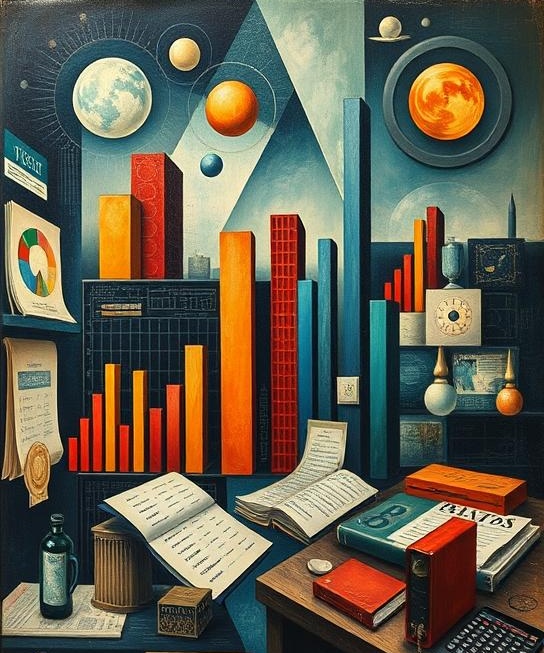
The Information Design Manifesto
Information is for the mind; art is for the soul.
The duty of an information designer is to forge these two into one.
For the world drowns in data but starves for meaning.
Information alone is sterile, and art without truth is hollow.
This sacred fusion of truth and beauty holds immense power to inform the confused, inspire the listless, and delight the doomers.
The forge is calling. Join us to shape a golden age of visual communication.
The new era will elevate data to emotional resonance. Our work will inspire curiosity and wonder, guiding people through vast oceans of information toward clarity and understanding.
Principles
Be real, then real good. Information designers are driven by authenticity and quality. Our responsibility to inform demands honesty and excellence—we don't ship until there's nothing left to add or remove.
Details are everything. We invert the 80/20 rule: 80% of our attention can go to the tiny details because they separate remarkable work from good work. We consider every pixel and interaction. Caring about the little things means our audience will stick around.
Become zen with the Venn. We are polymaths by nature, our toolbox an interdisciplinary overlap of code, colour theory, cartography, geometry, interface design and data science. Our practice demands creative technique and technical creativity.
Resist entropy with elegance. The world only gets more complex: history only gets longer, datasets larger, technology more sophisticated. There is ever more to learn, and it gets ever more complicated. To protect society from the onslaught of complexity, we find signal in the noise and explain it with simple visual elegance. There has never been so much information, and tomorrow there will be more.
Liberate good data. Terabytes of valuable data remain trapped in prisons of academic reports and government databases. It's our responsibility to deliver justice and set them free.
Champion inconvenient truths. Most people have (data) trust issues. They regularly ignore new information, even irrefutable information, if it contradicts their existing beliefs, identity, or investments. Disguising the evidence with good design helps it slip past the brain's security system. Faced with beauty, a soldier lowers their guard and opens their mind.
Get to intuition. Emotion drives behaviour more than knowledge—just ask the overweight doctor. We don’t just show people data, we help them feel it in their bones. Incidental learning during an immersive activity helps information become intuition. Visual explainers, stories, and games transform cerebral understanding into instinct.
Reject soulless work. Business intelligence dashboards are the antithesis of our work – corporate spreadsheets wearing cheap suits. We reject their bland designs, bloated code, suggested charts, and janky interactions.
Abstract thoughtfully. Information design is a portal that connects reality to its abstractions; the macro to the micro. Let the part tell the whole to reduce cognitive load, but maintain balance and nuance.
Respect the data and your audience. Paint the full picture: provide context and don’t mislead. Data is vulnerable to misrepresentation. You may disguise the truth but never beat it out of shape. Let the data tell its story.
The call
Information designers: Be the bridge, the translator, the alchemist who turns silicon data into gold.
Your precision, creativity, and care are essential services to humanity.
The forge is hot. Make sense of the world. Make something that matters.